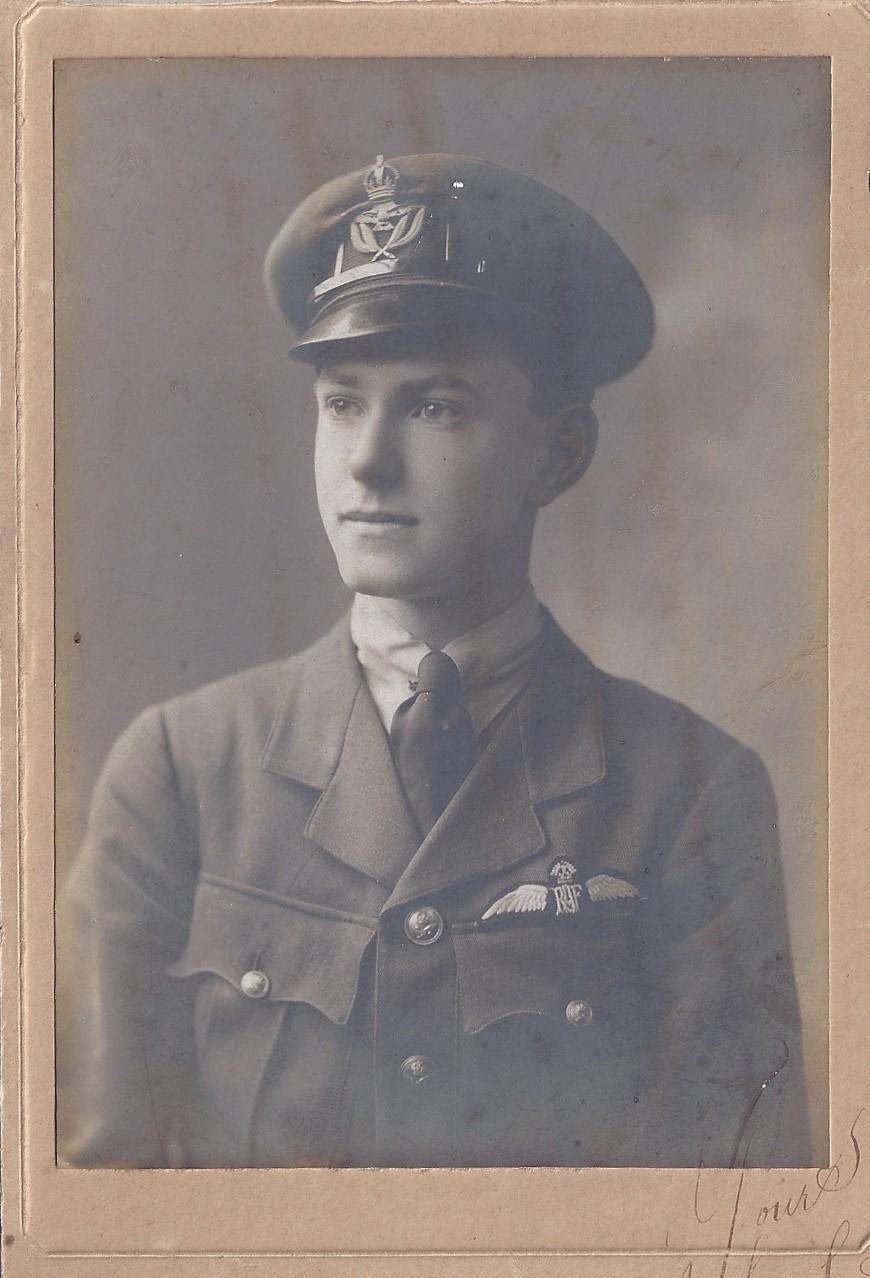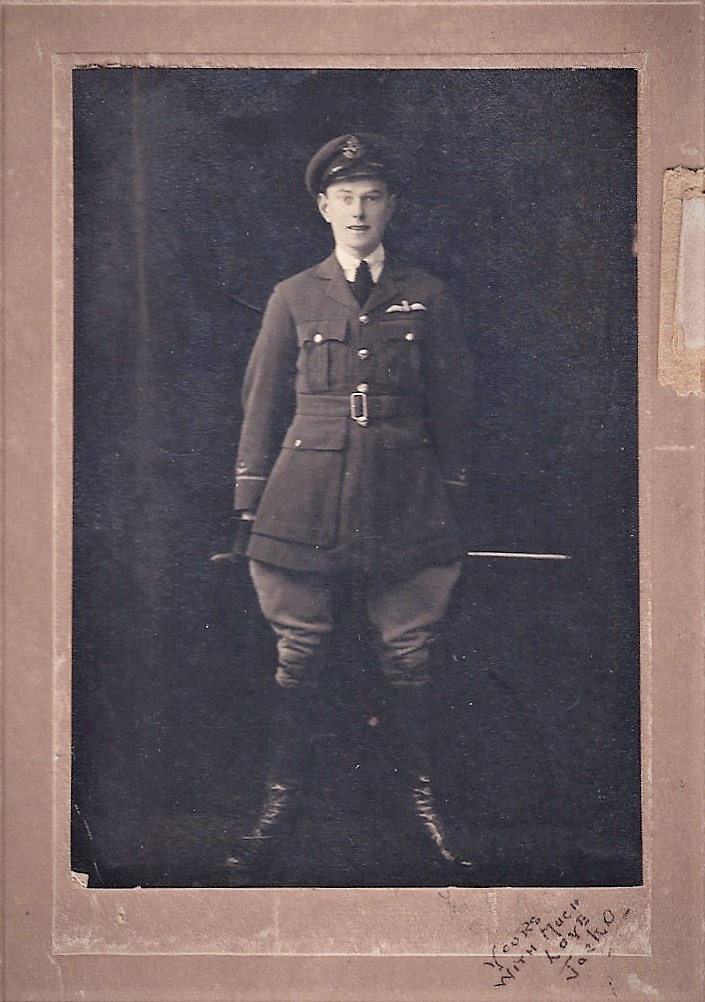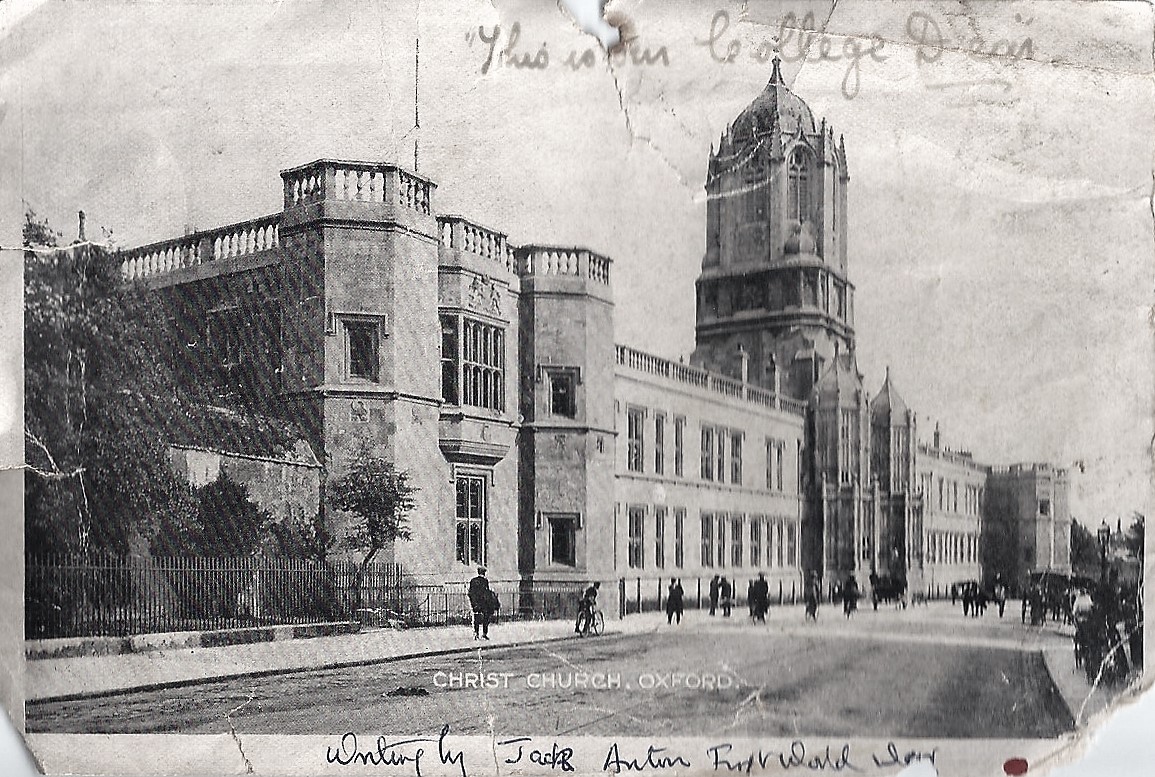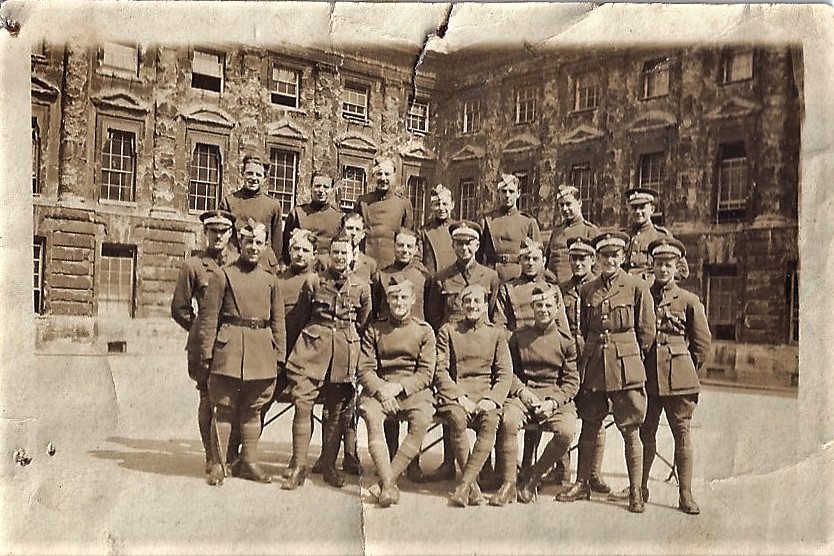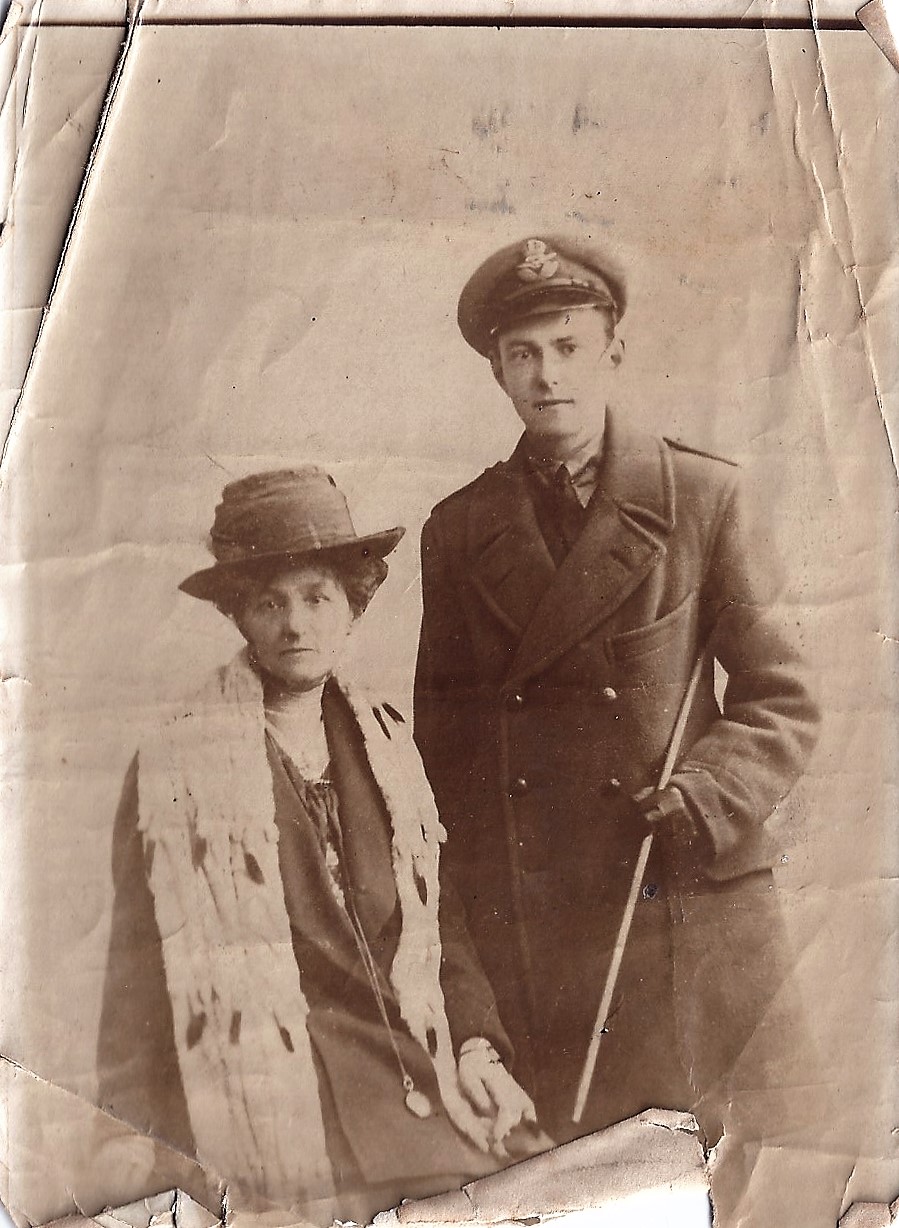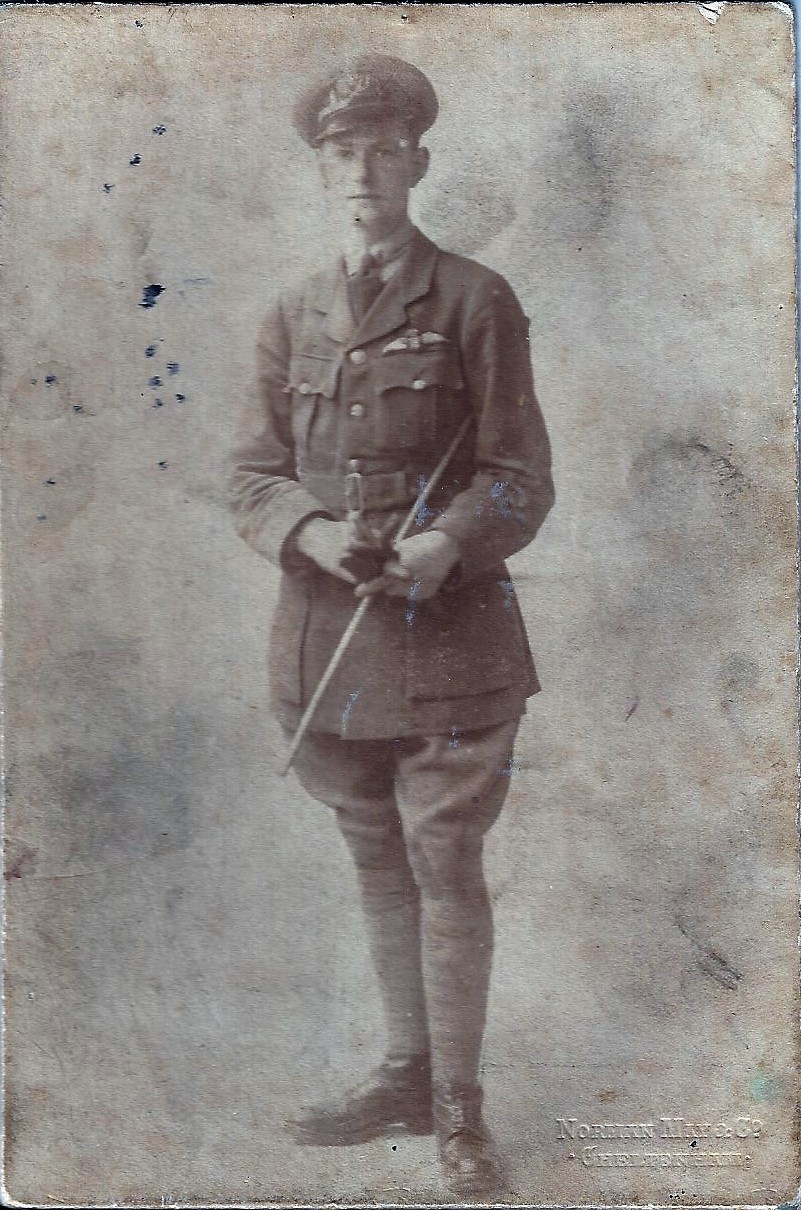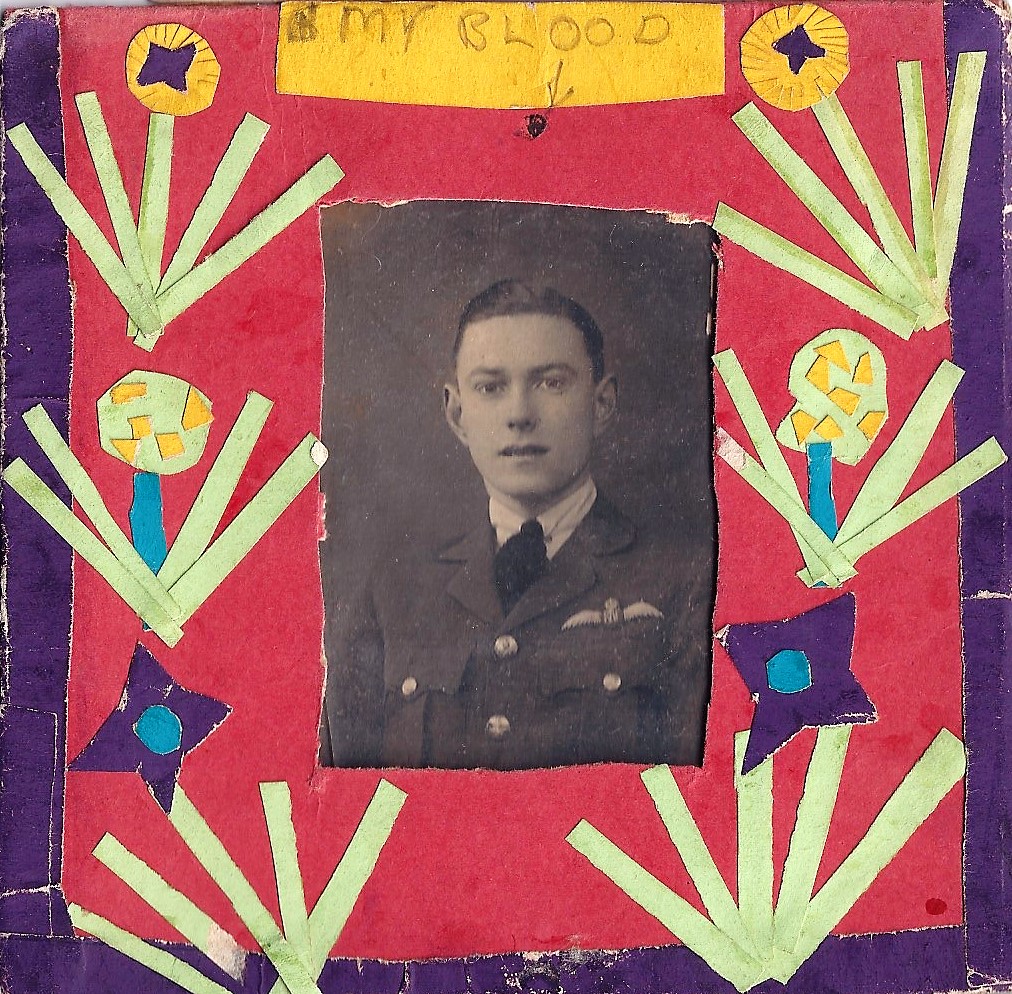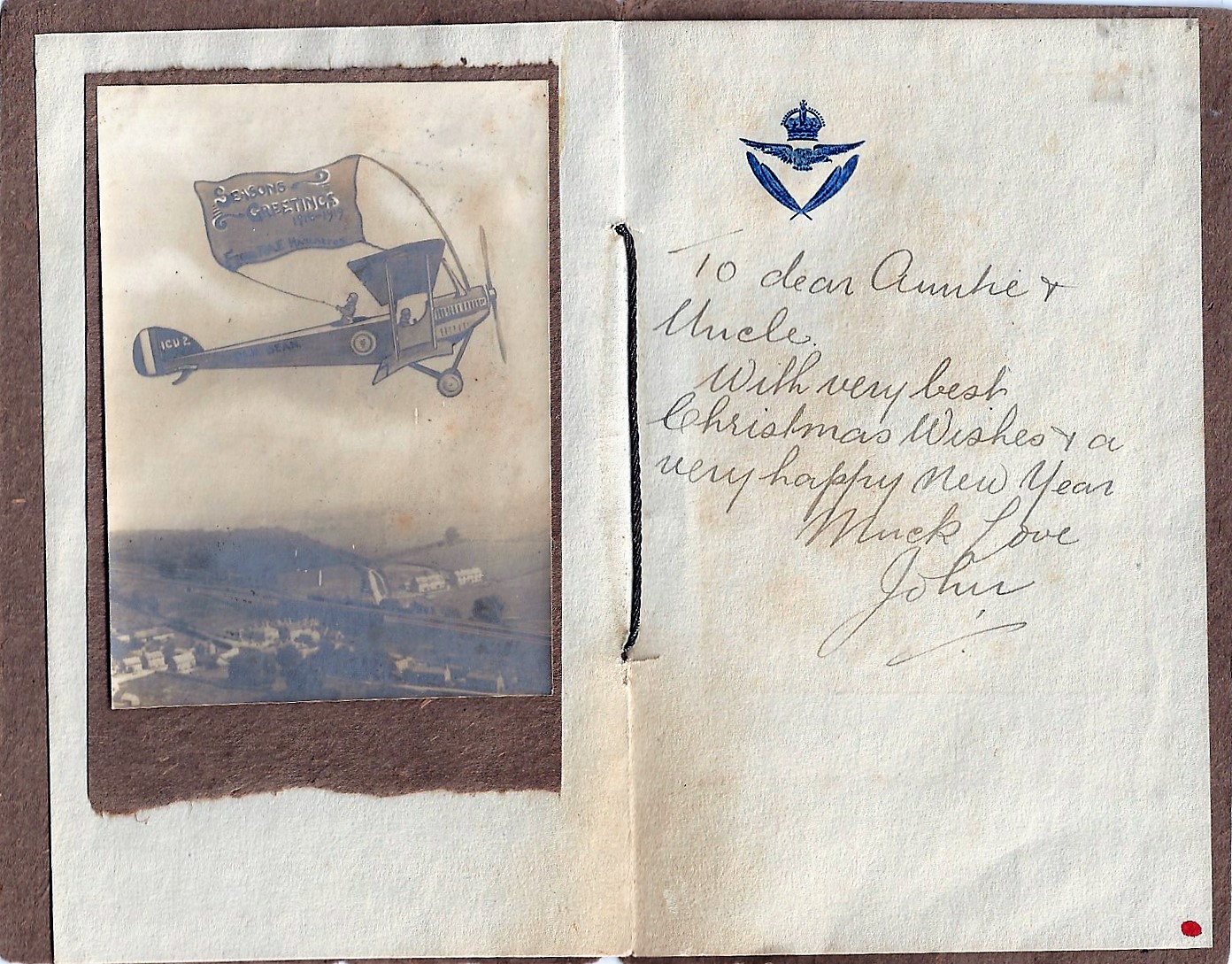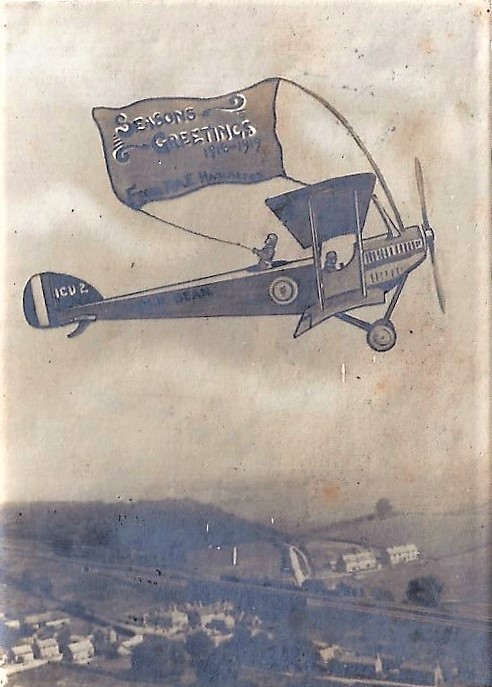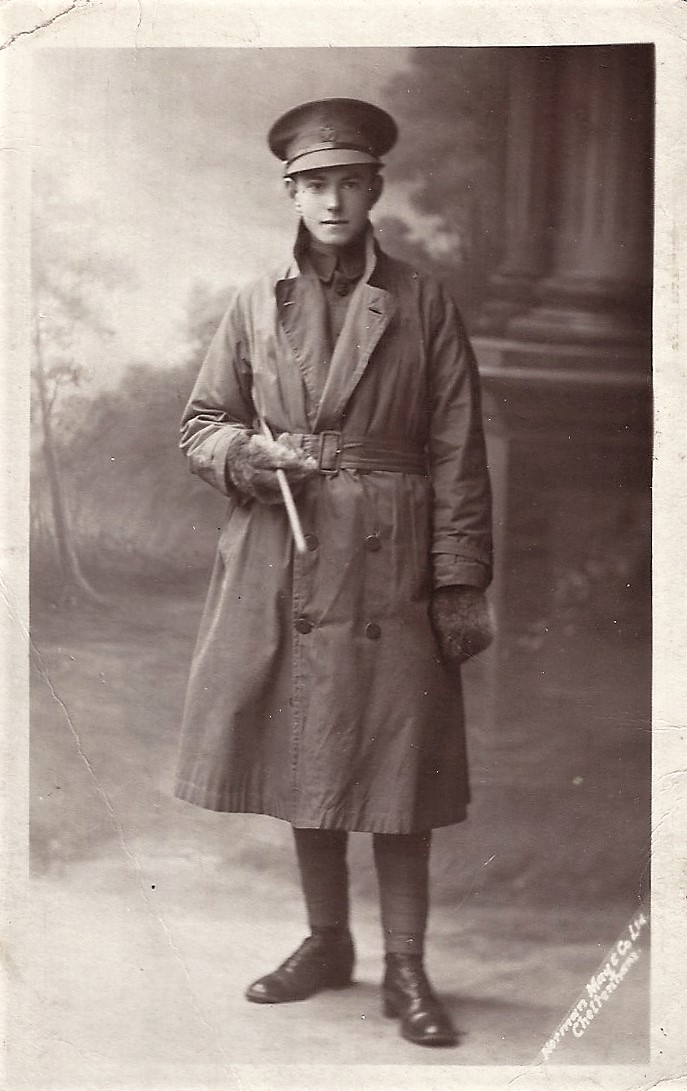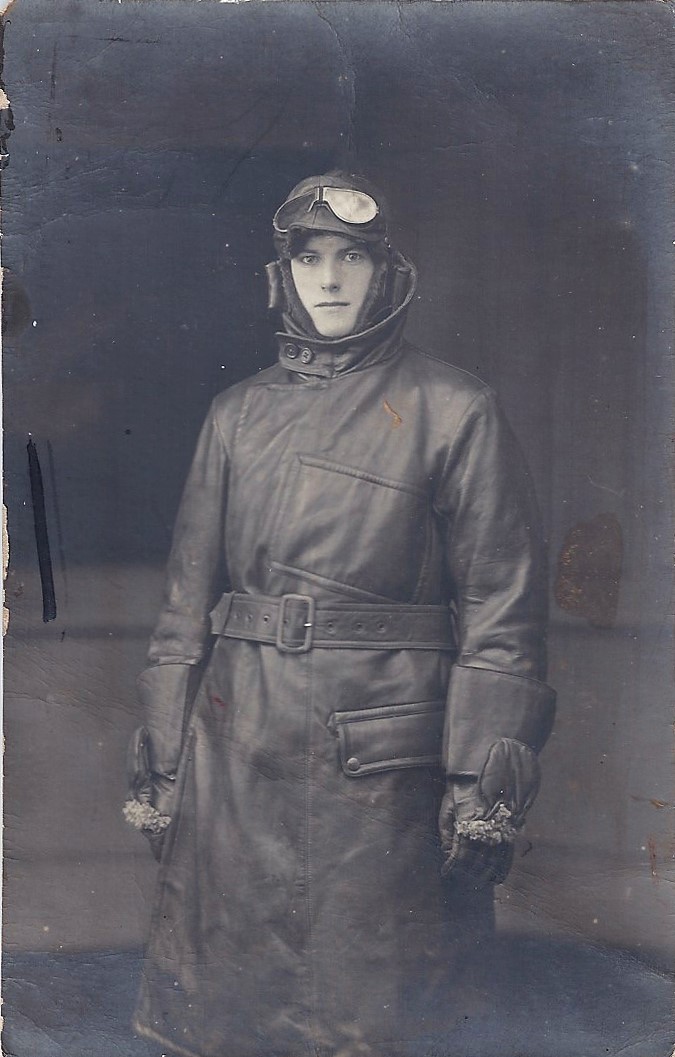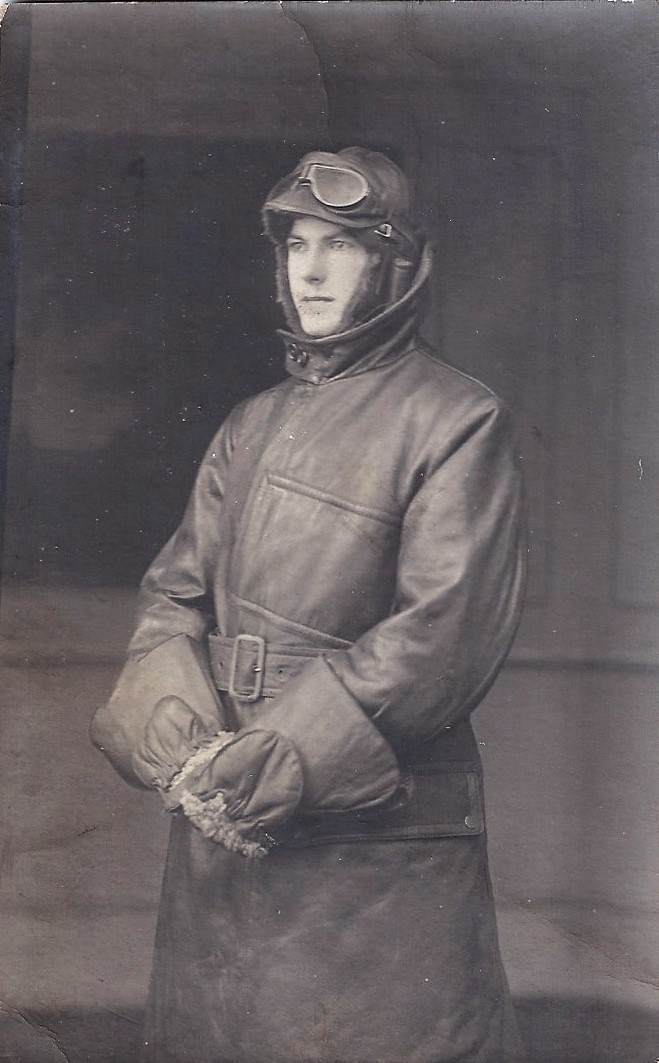World War One
John Anton’s First World War service in the Royal Flying Corps
Very little is known about his time in the RFC/RAF other than from his photographs and his RAF service record sheets. There were several framed photographs of John around his family home that existed to 1953 when the family moved out and the property was let. The photograph on the left was the most prominent, residing on a bookcase in the sitting room.
He left a very attractive souvenir, a joystick from a plane which his nephew (me) brandished around as a young boy and once chased his elder cousin, Sheila, round the house waving it. Sheila shut the door on me and I hit the door. 75 years later I revisited the former family home of John’s parents and photographed the door with the dent still there. The joystick was a heavy metal tube about 20 inches long and 1½ inches in diameter with a flat brass polished top. Sadly the joystick vanished in a house move, but I like to think that it is still out there, owned by some WW1 enthusiast. He never flew a plane in combat as the war ended before he could do so.
The first photograph shows him as a new recruit without any wings.
He went on a training course in Christ Church College, Oxford. His writing on the top of the postcard, “This is our College, Dear.”
The group photo taken in the Quad shows cadets in different uniforms, the white bands round their hats indicating that they are cadets. John is standing in the front row second from left, without a hat or cap.
John with his mother. The swagger stick indicates that he is now an officer.
John without an overcoat showing his wings.
The photo in the colourful cardboard frame was made by his nephew, I think it was when he was eight, as a Christmas present for his mother. His nephew writes, “There is a bizarre message on the top, an arrow pointing to a spot saying ‘My Blood’. My memory tells me that it was real blood which somehow got there by mistake and rather than try to clean it, I highlighted it as a sign of earnestness of feeling about my Uncle John.”
His 1918 Christmas card (probably) to his Uncle Alexander and Auntie Maggie who had the tenancy of the family farm, Redhill Farm, in Rothiemay in north-east Scotland. The photo on the card is rather faded, but the banner reads: Seasons Greetings 1918-1919 From RAF Harlaxton, Nr Grantham Lincs
The aircraft has OLD BEAN written on the side.The identifying code on the tail plane, ICU2, translates as ‘I see you too’!
Perhaps someone can identify Harlaxton from the aerial photograph in the background?
John in the studio of May & Co Cheltenham, wearing a raincoat
Two photos of John looking ready for action with padded leather coat and gloves
John’s Service Records
The details below are from his War Office records. All sheets have his name, address and age.
First sheet:
12223 Pte. (Private) Inns of Court RFC
To report to 2SMA 15.2.18 (No. 2 school of Military Aeonautics, Christchurch College, Oxford)
Second sheet:
9.5.18 to Harlaxton, Lincs to No. 2 School of Aeronautics.
He leaves 8.6.18 with the words “for disposal”.
There is not much else in the records until he is posted from a unit – 4 D.T.b.s. on 4.2.19 to 3 D.T.b.s. and from there on 14.3.19 “for dispersal”. It is not known what D.T. stands for, except that all squadrons have a code in letters and D.T. is one of them, for 98 Squadron, which did go to France from Gainsborough before John got to Harlaxton.
The last entry – Records Office, Blandford Forum
Transferred to Class G and, underneath in the same handwriting, “RAF Reserve 12.4.19”.
Finally he is gazetted 2nd/Lt in the London Gazette on 8.7.20, staying in the reserve until 22.9.20. This is the last entry in the records.
It is not thought he saw active service, yet how is there military memorabilia left behind?
Mystery
It was always assumed by John’s nephew that John never went to France because no mention was ever made of this in the 1940s and 1950s. In the past, there was no easy access to War Office records.
We now know that there was probably a five-month gap between John qualifying as a pilot and the end of the war. What happened in this gap? John’s brother-in-law, married to John’s sister, Pixie, was also a pilot at that time and told his son in a terse sentence, “When we qualified, half the intake went to France and were killed, the other half went to Egypt and lived.” His son failed to ask any more questions.
In John’s family, there were three objects that could have come from the war:
- The joystick from a plane (described earlier)
- A huge brass shell case
- A pack of postcards of ruined villages in Northern France.
The joystick was always acknowledged as John’s. It is now thought more likely that it was a souvenir collected from a crashed plane.
The shell casing was polished and used as a container for twigs and kept near the fireplace.
The postcards were kept in the attic. At the time, no link was made between the postcards and John. They were ugly and shocking. They have only recently been disposed of to a charity shop. Is this enough evidence to suggest that John did go to France, perhaps even after the war ended? We will never know, unless more War Office records can be found. There is no knowledge of John being awarded medals during the war.

